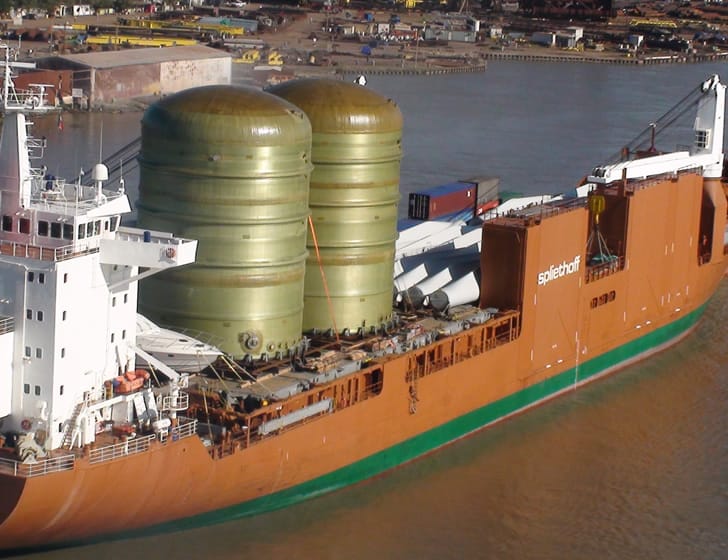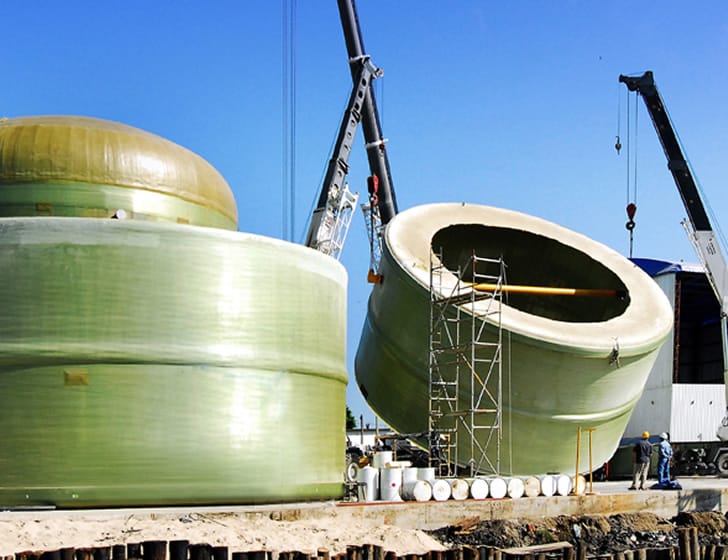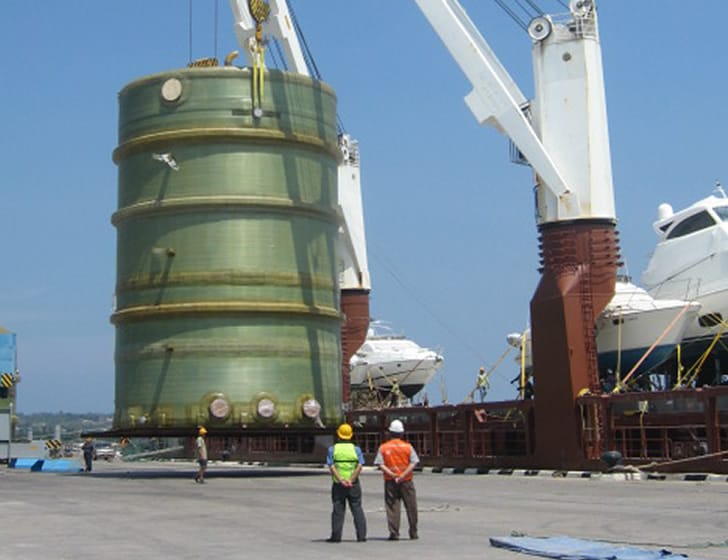
FRP Tanks
FRP tanks are industrial grade storage & processing containers with special qualities that make them the industry standard for corrosion resistant applications
Fiberglass reinforced plastic (FRP) is a composite material usually made up of glass fibers and epoxy resin. This material can be made of different types of fibers and resin, but share the following core characteristics:
- Lightweight This material is widely used because its weight makes it easy to transport and install
- Strong & Durable Although FRP is made from glass strands, it be stronger than steel in tensile strength and durability at the cost of impact resistance
- Corrosion Resistant A key characteristic of FRP is its high resistance against corrosive chemicals, acids, and gasses
- Customizable Manufacturing Process The fabrication process allow the tanks to be made for a specific use case.
As we just learned, FRP tanks provide a powerful alternative to steel or other metal containers. Specifically, the ability for a manufacturer (like us) to design a tank to fulfill a client's specific use case makes it the gold standard in a wide variety of industries like mining, power generation, waste processing, food, pharmaseutical, and many more.

How are FRP tanks made
There are two main manufacturing processes used when building these tanks. Hand-layup for the tank floor and cap, and filament winding for making the cylindrical body.
The tanks are made of several layers of different types of fiberglass or other materials to form three main layers.
- Corrosion Resistant Layer (Barrier) This layer will be in contact with highly corrosive chemicals, so it needs a special kind of fiberglass material with low strength but high chemical resistance. Other materials can be used if the chemical is damaging to fiberglass
- Structural Layer This layer is made up of the stronger type of fiber glass material. Giving strong tensile resistance in different axes depending on the use case.
- Outer Layer This layer forms the outer shell and it forms a protective layer against external factors such as rain, UV light, etc...

Conclusion
Although we went through a simplified version of the manufacturing process, building FRP tanks requires a great amount of engineering, quality assurance, and experience. A badly designed tank can leak, break down, and cause accidents if not made with the correct design specifications and quality materials
PITSA has been manufacturing custom made FRP solutions for our clients since 1965. Our clients come to us with all types of requirements and limitations for their specific use case. Thanks to our expert knowledge, experience and Quality Assurance process, we've become Mexico's biggest FRP manufacturing and exporter for projects in the US and around the world